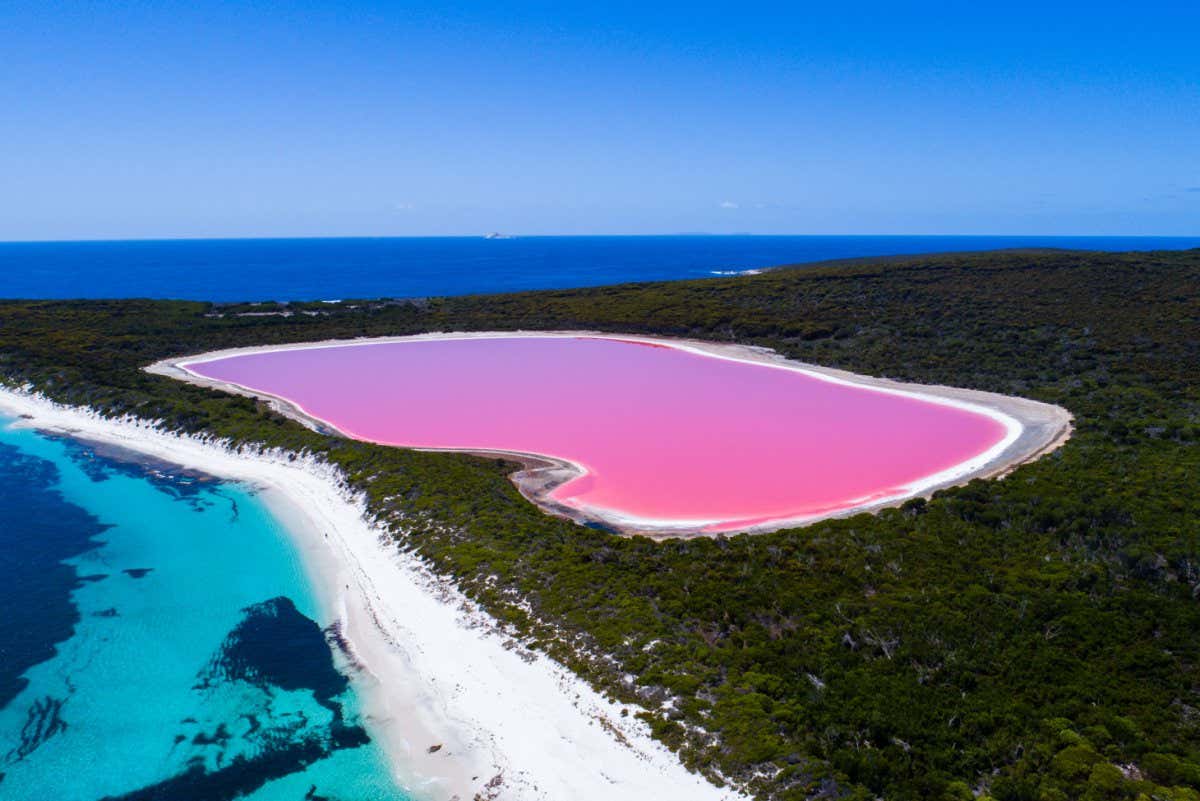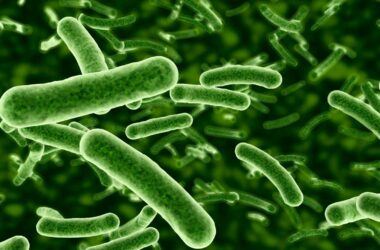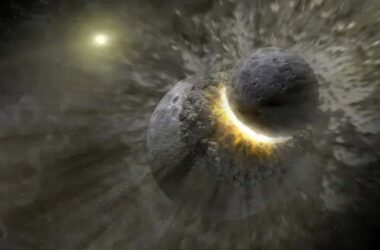Aerial view of Lake Hillier, Australia
Tourism Western Australia
The pink color of Lake Hillier, a remote lake in Western Australia, has long puzzled scientists. However, new research suggests that the color is caused by a combination of colorful bacteria and algae.
Lake Hillier is located on Middle Island off the southern coast of Western Australia. It is about 600 meters long, 250 meters wide, and has extremely high salinity levels – about eight times saltier than the ocean.
Scott Tighe from the University of Vermont became interested in Lake Hillier after seeing it on a television program. Tighe, along with Ken McGrath from Microba in Brisbane, collected water and sediment samples from the lake to analyze.
Using a technique called metagenomics, Tighe, McGrath, and their colleagues sequenced the DNA in the samples to identify the different microorganisms present. They found nearly 500 extremophiles, including bacteria, archaea, algae, and viruses, in Lake Hillier. Most of these microorganisms were halophiles, which can tolerate high levels of salt.
The researchers discovered that the lake contains colorful microbes such as purple sulphur bacteria, red-orange bacteria called Salinibacter ruber, and red-colored algae called Dunaliella salina. These microbes, along with others, contribute to the pink color of the lake.
The pink pigments in these microbes, known as carotenoids, may provide some protection against the extreme saltiness of the lake.
Some of the microorganisms found in Lake Hillier may be new to science and require further characterization.
In addition to Lake Hillier, the Extreme Microbiome Project team has sampled other extreme environments around the world, including the Darvaza gas crater in Turkmenistan, the Dry valleys of Antarctica, brine lakes deep under the ocean off western Greenland, and Movile cave in Romania. They have plans to sample the Danakil depression in Ethiopia and Lake Magic in Australia, both of which are known for their extreme conditions.
Extreme Microbiome Project scientist Stefan Green sampling Darvaza gas crater in Turkmenistan
Extreme Microbiome Project
Extreme Microbiome Project researchers Scott Tighe and Sarah Johnson sampling the Dry valleys of Antarctica
Extreme Microbiome Project
Extreme Microbiome Project scientist Samantha Joye sampling a deep-ocean brine pool in the Alvin submarine in the Gulf of Mexico
Extreme Microbiome Project
Read more: Biology’s moonshot: The mission to decode the DNA of all life
Topics:
Insights
- Aerial view of Lake Hillier, Australia
- Lake Hillier, located in Western Australia, is known for its bubblegum pink color, which has intrigued scientists for a long time.
- The pink color of the lake is a result of a combination of colorful bacteria and algae.
- Lake Hillier has extremely high salinity levels and is about eight times saltier than the ocean.
- The lake was studied by Scott Tighe from the University of Vermont and Ken McGrath from Microba in Brisbane, Australia.
- Metagenomics was used to analyze the DNA in the water and sediment samples from the lake.
- The analysis revealed the presence of nearly 500 extremophiles, including bacteria, archaea, algae, and viruses.
- Purple sulphur bacteria, red-orange bacteria (Salinibacter ruber), and red-colored algae (Dunaliella salina) contribute to the pink color of the lake.
- The pink pigments in these microbes, called carotenoids, may help protect them from the extreme saltiness of the lake.
- The Extreme Microbiome Project has also studied other extreme environments around the world, such as the Darvaza gas crater in Turkmenistan and the Dry valleys of Antarctica.
- The team plans to sample the Danakil depression in Ethiopia and Lake Magic in Australia in the future.








